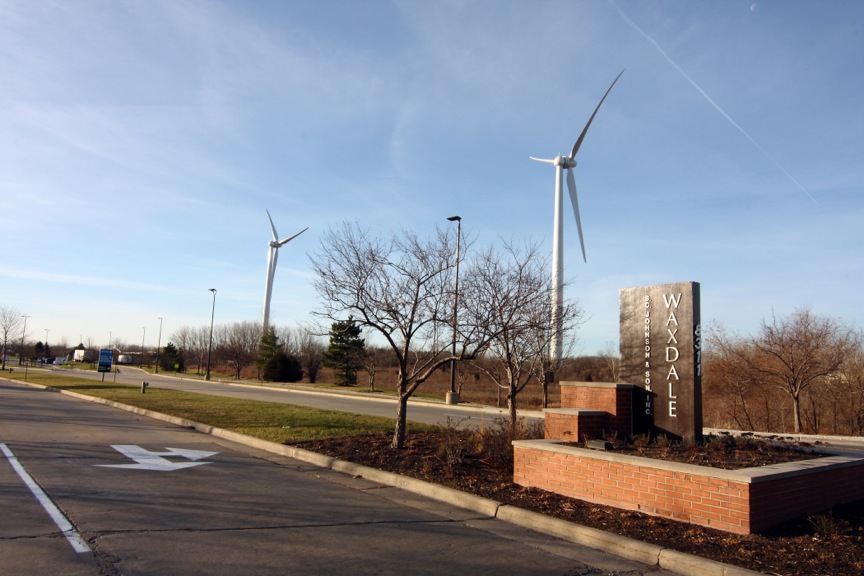Wisconsin Winds of Change: Exploring Wind Energy in the Badger State

Have you ever driven through Wisconsin’s rolling hills and caught sight of those majestic white giants spinning gracefully against the horizon? They are, of course, wind turbines, and they represent a growing source of clean energy in the Badger State. While their presence has become increasingly familiar, the story of wind energy in Wisconsin is complex and fascinating, filled with both promise and challenges.
Wind power offers Wisconsin a path toward a cleaner energy future, reducing reliance on fossil fuels and mitigating the effects of climate change. But its implementation hasn’t been without hurdles. From navigating regulatory landscapes to addressing community concerns, the journey of wind energy development in Wisconsin has been one of constant evolution. This article delves into the intricacies of wind turbines in Wisconsin, exploring their history, benefits, challenges, and the future they hold for the state.
The history of wind power utilization in Wisconsin, like many other places, began with small windmills used primarily for water pumping on farms. These early wind energy converters served a vital purpose in rural communities, providing a reliable source of power for essential tasks. However, the rise of large-scale wind turbine installations for electricity generation is a much more recent development. The first utility-scale wind farm in Wisconsin was constructed in the early 2000s, marking a significant shift towards incorporating wind energy into the state's electricity grid. This marked the beginning of a new era, harnessing the power of Wisconsin's wind resources on a much larger scale.
The importance of wind energy in Wisconsin cannot be overstated. As the state strives to diversify its energy portfolio and reduce its carbon footprint, wind power offers a viable and sustainable alternative to traditional fossil fuel-based energy sources. Wind turbines contribute to a cleaner environment, reduce greenhouse gas emissions, and promote energy independence. Moreover, wind energy development creates jobs in manufacturing, construction, maintenance, and operation, boosting local economies and providing opportunities for skilled workers.
However, the development of wind energy in Wisconsin has faced its share of challenges. Public perception and acceptance play a crucial role in the success of wind projects. Concerns about noise, visual impact, and potential effects on wildlife have been raised by some communities. Addressing these concerns through transparent communication, community engagement, and rigorous environmental impact assessments is vital for the continued growth of the wind energy sector in Wisconsin. Finding a balance between harnessing the benefits of wind power and mitigating potential negative impacts is a key focus for stakeholders involved in wind energy development.
One benefit of wind turbines is their positive impact on air quality. Unlike fossil fuel power plants, wind turbines produce no air pollution or greenhouse gases during operation, contributing to cleaner air and a healthier environment for Wisconsin residents. Another benefit is job creation. The wind energy industry generates employment opportunities in manufacturing, construction, operation, and maintenance, providing economic benefits to local communities.
A third benefit is energy diversification. Wind energy reduces Wisconsin's reliance on fossil fuels, promoting energy independence and price stability by diversifying the state's energy sources. This can help shield Wisconsin from the volatile price fluctuations often associated with fossil fuels.
Advantages and Disadvantages of Wind Turbines in Wisconsin
| Advantages | Disadvantages |
|---|---|
| Clean Energy Source | Visual Impact |
| Job Creation | Noise Concerns |
| Energy Independence | Wildlife Impact |
Best Practices: Thorough site assessments, community engagement, and utilizing advanced turbine technology are crucial for successful wind projects.
Real Examples: The Forward Wind Energy Center in Dodge and Fond du Lac counties provides a concrete example of successful wind energy implementation in Wisconsin.
Challenges and Solutions: Addressing noise concerns can be achieved through careful siting and the use of noise-reducing technologies. Mitigation strategies for wildlife impact include pre-construction studies and ongoing monitoring.
FAQs: What is the average lifespan of a wind turbine? (Typically 20-25 years.) How much land does a wind farm require? (The footprint is relatively small, with the majority of land remaining available for other uses.)
Tips and Tricks: Engaging with local communities early in the planning process can help build trust and address concerns proactively. Supporting research and development of advanced wind turbine technologies can further improve efficiency and reduce environmental impacts.
In conclusion, the journey of wind energy in Wisconsin is a testament to the state’s commitment to a sustainable future. From its humble beginnings with farm windmills to the impressive scale of modern wind farms, wind power has become an integral part of Wisconsin's energy landscape. While challenges remain, the benefits of clean energy, job creation, and energy independence are undeniable. By fostering open communication, embracing innovation, and prioritizing responsible development, Wisconsin can continue to harness the power of the wind to build a cleaner, more prosperous future for generations to come. Investing in wind energy is not just about generating electricity; it’s about investing in a healthier environment, a stronger economy, and a more resilient future for Wisconsin. Exploring the possibilities of wind energy further and supporting its responsible development is vital for the continued growth and prosperity of the Badger State.
Jd 2600a auto lensmeter your ultimate guide
Conquer terra cotta stains on concrete your ultimate guide
Ac symbol secrets decoding the squiggle on your circuit













